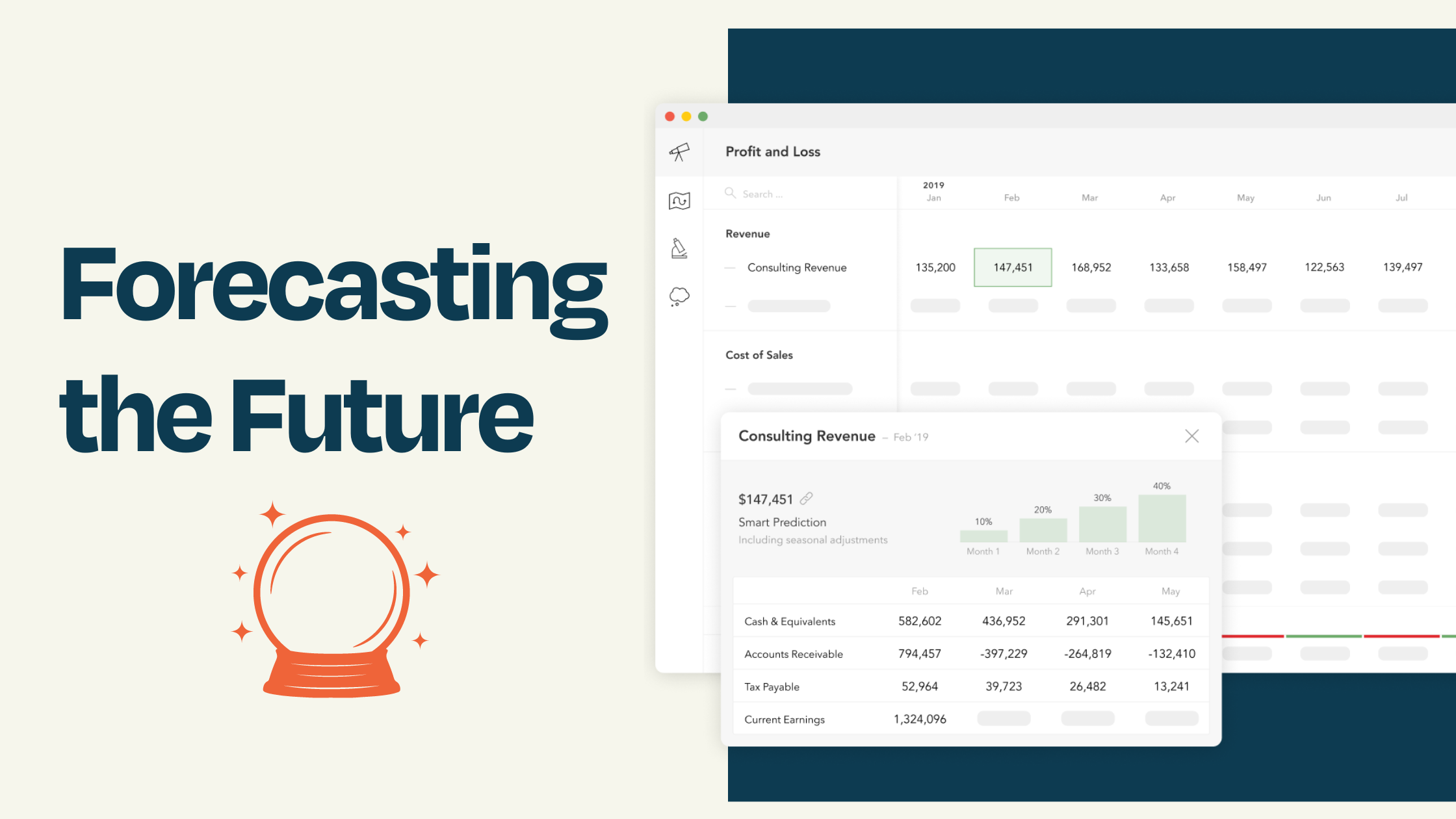Burn Rate Multiple: A Must-Know Metric for Business Owners
As a business owner, it's essential to understand and calculate your burn rate. Understanding this metric is critical for gauging the fiscal health...
13 min read
Enzo O'Hara Garza
:
September 05, 2023

Running a startup can be simultaneously thrilling and terrifying. The rush of bringing novel ideas to life, the challenge of building a team from the ground up, and the excitement of the unknown make it a unique and fulfilling journey. However, every startup owner knows that underlying the exhilaration is a realm of complex financial decisions and strategies that can make or break their business.
In this comprehensive guide, we dive into the world of startup financials, providing you with strategies, tips, and tools that can steer your venture towards a prosperous future. We aim to demystify financial planning and management for startups, turning what many entrepreneurs find daunting into a manageable and even rewarding task.
From the fundamentals of financial planning to metrics that measure success, from creating financial statements to overcoming financial challenges, this guide will serve as your roadmap. By understanding and implementing the insights shared here, you will be well-equipped to build a strong financial foundation for your startup.
So, whether you're a first-time entrepreneur or a seasoned startup owner looking to fine-tune your financial strategies, sit back, grab a cup of coffee, and let's dive into the world of startup financials.
Financial planning is a vital component of startup success. It entails creating a well-defined budget, establishing clear financial goals, understanding the distinction between forecasting and accounting, and formulating a comprehensive financial plan.
Startups must diligently monitor key financial metrics to ensure their financial health. These metrics include revenue, expenses, net income, gross margin, burn rate, runway, customer lifetime value (CLTV), customer acquisition cost (CAC), churn rate, customer retention, and return on investment (ROI).
Startups encounter unique financial challenges, such as limited access to funding, high costs associated with product development, fierce competition, and rapidly evolving business needs.
Efficient cash flow management is critical for the sustainability of startups. Employing strategies like prompt invoicing, efficient expense management, revenue growth initiatives, and cash flow forecasting can help maintain a healthy cash flow.
There are several funding options available for startups, including bootstrapping, angel investors, venture capital, and crowdfunding, each with its own advantages and disadvantages.
Utilizing financial management tools and software, such as QuickBooks, Xero, and FreshBooks, can significantly simplify financial tasks for startups.
When it comes to launching a startup, building a robust financial foundation is critical for success. However, many entrepreneurs find financial planning and management challenging. This section will help demystify the process and provide practical tips for managing your startup's finances effectively.
Financial planning is crucial for startups as it lays the foundation for their success and growth. It involves a series of steps that are aimed at ensuring the financial stability and profitability of the business.
One of the first steps in financial planning is creating a budget. This involves estimating the income and expenses of the startup over a specific period. By creating a budget, startups can ensure that they are not spending more than they are earning and can identify areas where they can cut costs.
Setting financial goals is another important aspect of financial planning. These goals provide a clear direction for the startup and help in measuring its progress. Financial goals could include reaching a certain revenue level, achieving a specific profit margin, or securing a particular amount of funding. By setting clear and measurable financial goals, startups can stay focused and motivated towards achieving them.
Understanding the difference between forecasting and accounting is also essential for startups. While forecasting involves predicting the future financial performance based on current data and trends, accounting focuses on recording and analyzing past financial transactions. Both forecasting and accounting are important for effective financial management, but they serve different purposes. Forecasting helps in planning for the future and making informed decisions, while accounting helps in evaluating the financial health of the startup based on past performance.
Creating a financial plan is the final step in financial planning for startups. A financial plan outlines the startup's financial objectives and the strategies that will be used to achieve them. It includes details about the startup's income and expenditure, as well as strategies to increase income and reduce expenditure. Regularly reviewing and updating the financial plan is crucial to ensure that it remains relevant and effective.
In addition to these fundamental steps, there are also best practices that startups can follow to effectively manage their finances. These include regularly reviewing financial statements, using financial software to automate tasks and improve accuracy, regularly updating budgets and forecasts, seeking professional financial advice when needed, and setting aside funds for emergencies.
Tracking financial performance is also important for startups, and this can be done by monitoring specific metrics and key performance indicators (KPIs). Some of the most important metrics and KPIs for startups include revenue, expenses, net income, gross margin, burn rate, cash runway, customer lifetime value, customer acquisition cost, churn rate, customer retention, return on investment, and debt service ratio. By tracking these metrics and KPIs, startups can gain insights into their financial performance and make data-driven decisions.
Creating financial statements is an essential part of financial planning for startups. There are various tools available to automate the creation of financial statements, such as QuickBooks Online and FreshBooks. These tools gather financial transactions and generate reports like balance sheets, income statements, and cash flow statements. Another option is Google Sheets, which allows for more hands-on customization but requires a certain level of financial knowledge and can be time-consuming. Xero is a powerful alternative that combines automation and customization, allowing startups to create custom financial statements that can be easily shared with stakeholders. Xero also offers a complete accounting solution with features for invoicing, inventory management, payroll, bank connections, and more.
Despite the importance of financial planning, startups often face financial challenges. One of the most common challenges is securing essential funding. Limited investor interest, underdeveloped business plans, and a shortage of personal capital can make it difficult for startups to secure funding. To overcome this challenge, startups should focus on crafting a compelling business plan that clearly outlines their vision, market potential, and financial projections. A well-prepared business plan can attract the right investors and increase the chances of securing funding.
Budgeting involves creating a plan for your startup's income and expenditures over a specific period. It's a way to ensure you're not spending more than you're earning and to identify areas where you can cut costs. By setting a budget, you can establish financial boundaries and allocate resources effectively.
Forecasting, on the other hand, is about predicting your future financial performance based on current data and trends. It allows you to anticipate potential challenges and opportunities, enabling you to make informed decisions and adjust your strategies accordingly. By forecasting, you can estimate your revenue and expenses, assess the viability of your business model, and identify potential gaps in your financial plan.
Setting financial goals gives you a clear direction for your startup. Your goals could include reaching a certain revenue level, achieving a specific profit margin, or securing a particular amount of funding. These goals provide a roadmap for your financial planning and help you measure your progress towards success. By setting goals, you can stay motivated, focused, and aligned with your long-term vision.
Budgeting, forecasting, and setting financial goals are all crucial components of effective financial management for startups. Budgeting ensures that you have control over your expenses and income, forecasting helps you anticipate future financial scenarios, and setting goals gives you a clear direction for your startup's growth. By implementing these practices, you can enhance your financial stability, make informed decisions, and increase your chances of long-term success.
Forecasting and accounting play vital roles in the financial management of a startup. While forecasting involves predicting future financial performance, accounting is focused on recording and analyzing past financial transactions. Both practices are integral to effectively managing the financial aspects of a startup, although they serve distinct purposes.
A financial plan outlines your startup's financial objectives and the strategies you'll use to achieve them. Tips for creating a financial plan include:
Understand your startup's financial situation.
Set clear, measurable financial goals.
Identify potential sources of income and expenditure.
Develop strategies to increase income and reduce expenditure.
Regularly review and update your financial plan.
Best practices for managing startup financials include:
Regularly review your financial statements.
Use financial software to automate tasks and improve accuracy.
Regularly update your budget and forecasts.
Seek professional financial advice when needed.
Set aside funds for emergencies.
To effectively track the financial performance of your startup, it is essential to keep a close eye on specific metrics and key performance indicators (KPIs). Here are some of the most important ones:
Revenue is the total income generated by your startup, usually from sales of products or services.
Expenses include all the costs incurred in running your startup, including salaries, rent, utilities, and materials.
Net income is the difference between your startup's revenue and expenses. It's a key indicator of your startup's profitability.
Gross margin is a measure of your startup's profitability before overhead costs are considered.
Your burn rate tells you how quickly you're spending your startup's cash reserves. It's a crucial metric for startups, particularly those that are not yet profitable.
The runway is an estimate of how long your startup can continue operating with its current cash reserves. It's a vital metric for understanding when you'll need to secure additional funding.
Customer lifetime value (CLTV) measures the total revenue you can expect from a customer over the duration of their relationship with your startup.
Customer acquisition cost (CAC) is the total cost of acquiring a new customer, including marketing and sales expenses.
Churn rate is the percentage of customers who stop doing business with your startup over a specific period. It's a key metric for understanding customer retention.
Customer retention is the percentage of customers who continue to do business with your startup over a specific period. It's an essential metric for understanding customer loyalty.
Return on investment (ROI) measures the profitability of an investment. It's a crucial metric for understanding the effectiveness of your startup's spending.
A measure of the number of years for the business to repay total debt from free cash flow. The lower result indicates that the company is in a better position to rapidly repay its debt.
Creating financial statements for your startup is essential if you want to gauge the financial wellbeing of your business (and we know you do). There are a lot of tools out there to help you manage this, but listing them all would instantly put you into an accounting coma. So, let's explore some of the more commons (and our favorite) ones...
QuickBooks Online and FreshBooks are two examples of accounting software that can automate the creation of financial statements. These tools gather your financial transactions and generate reports such as balance sheets, income statements, and cash flow statements. Although these tools are quite adept at the tasks they perform, they may not offer the highest degree of customization or the capability to share reports seamlessly with stakeholders.
Google Sheets is a more hands-on option that allows you to manually create and customize your financial statements. However, this method requires a certain level of financial know-how and can be time-consuming compared to automated software.
A powerful alternative that brings together the best of both worlds—automation and customization—is Xero. Xero stands out for its ability to create custom financial statements that can be easily shared with management or board members, making it an ideal choice for startups.
Xero's software is robust yet user-friendly, allowing you to pull in data from different areas of your business to create comprehensive financial reports. It has a flexible design that enables you to tailor your financial statements to meet the unique needs of your startup.
With Xero, you are not confined to a rigid format. You can choose what to include in your reports, how to categorize your data, and how to present your financial information. This level of customization allows you to create financial statements that truly reflect the financial status and performance of your startup.
Sharing these customized reports is also a breeze with Xero. You can easily export your financial statements in various formats, or share them directly with stakeholders through the platform. This feature can be particularly beneficial when it comes to board meetings or investor presentations, where clear and accurate financial reporting is key.
Xero goes beyond just financial statements. It offers a complete accounting solution with features for invoicing, inventory management, payroll, bank connections, and more. It also integrates with a wide range of other business tools, providing a cohesive financial management system for your startup.
Creating a financial statement for your startup may seem like a daunting task, but it doesn't have to be. With the right tools, such as Xero, you can automate much of the process and focus on what matters most—understanding and improving the financial health of your business. So, take the leap, explore Xero, and start reaping the benefits of simplified financial reporting.
The path to startup success is often paved with financial challenges, each requiring astute navigation and strategic foresight. Understanding these hurdles is the first step in overcoming them:
One of the most daunting challenges for startups is securing adequate funding. This obstacle often stems from limited investor interest, underdeveloped business plans, or a shortage of personal capital. To counter this, focus on crafting a compelling business plan that clearly outlines your vision, market potential, and financial projections. This plan is not just a roadmap for your business but a key tool in attracting the right investors.
Consider using a tool like LivePlan, which will walk you through creating a business plan, step-by-step. This tool also integrates with Xero, so you can track the progress of your plan over time. Carve out time to craft the perfect plan, but also know that plans change over time. Your business plan should be revisited often , and adjusted to match your current objectives.
Many startups grapple with a lack of historical financial data, which can hinder future performance forecasting and funding efforts. In these early stages, it’s crucial to implement robust financial software to meticulously track and manage your finances. This approach not only aids in creating reliable forecasts but also builds a foundation for more informed decision-making.
This challenge can be overcome, especially with some forward-thinking research and planning. As a startup founder, you can:
Develop Projections and Forecasts: Start by creating financial projections based on market research and well-informed assumptions. Use industry benchmarks, competitor analysis, and market trends to build realistic revenue, expense, and cash flow projections. While these won’t be as accurate as historical data, they provide a starting point for planning and decision-making.
Implement Rigorous Financial Tracking from Day One: As soon as your business begins operations, implement a robust system for tracking all financial transactions. Utilize accounting software to record sales, expenses, and cash flow. Consistent and accurate record-keeping from the outset will quickly build a valuable data repository.
Leverage Short-Term Data and Micro-Trends: Even with a few months of data, you can start identifying micro-trends and patterns in your finances. Use these insights to adjust your business model, pricing strategy, and cost management in real-time.
Utilize Industry Insights and External Data: Supplement your limited internal data with external data sources. Industry reports, market analyses, and economic forecasts can provide valuable context and help fill in the gaps left by the lack of historical data.
Adopt a Lean and Agile Approach: In the absence of extensive data, adopt a lean business model that allows for flexibility and quick pivoting. Be prepared to adjust your business strategy based on early feedback, customer responses, and initial financial outcomes.
Engage in Regular Financial Reviews: Regularly review your financial situation, even if you’re working with limited data. Monthly or quarterly financial reviews can help you make informed decisions and spot potential issues early.
Seek Expert Advice: Don’t hesitate to consult financial advisors or mentors. Experienced professionals can offer valuable insights and help interpret the data you do have, guiding you in making educated financial decisions.
Perform Customer Feedback and Market Research: Use customer feedback and targeted market research to gain insights into your market and customer preferences. This information can guide product development, marketing strategies, and sales approaches.
You are in control of the success of your startup and, by taking these steps, you can mitigate the challenges posed by insufficient historical data and make informed decisions to steer their business toward growth and stability.
Venturing into new markets and developing innovative products is inherently costly and fraught with risks. Startups often invest heavily in research, development, marketing, and sales, all without the promise of immediate returns. To mitigate these risks, adopt a lean approach - prioritize minimum viable products, gauge market response, and iterate rapidly. This strategy helps in managing expenses while remaining responsive to market feedback.
The startup ecosystem is intensely competitive, often coupled with market uncertainty. To carve out a niche, it's imperative to stay agile and informed. Keep a close pulse on market trends, customer preferences, and competitor strategies. This ongoing market analysis should inform and sometimes pivot your business strategy, ensuring relevance and competitiveness.
Rapid growth, while desirable, brings its own set of challenges, such as the need for more resources, staff, or operational scaling. Anticipate these needs by maintaining a dynamic financial plan. This plan should be revisited and revised regularly, aligning with your evolving business needs. Additionally, consider scalable solutions like cloud technologies and outsourcing for non-core tasks, which offer flexibility and cost efficiency.
For any small business, cash flow isn’t just a financial metric; it’s the fuel that keeps your business engine running. Mastering cash flow management is critical for ensuring your startup not only survives but thrives in the competitive business landscape.
Accelerate Invoice Processes: Implement a system for issuing invoices immediately after delivering a service or product. Utilize digital invoicing tools that send automated reminders to clients, encouraging prompt payments. Consider offering early payment discounts to motivate quicker settlements.
Rigorous Expense Monitoring: Regularly review and categorize your expenses. Identify non-essential costs that can be reduced or eliminated. Adopt cost-effective solutions like cloud computing and remote working to minimize operational expenses. Negotiate better terms with suppliers and consider bulk purchasing for discounts.
Diversify and Boost Revenue Streams: Explore multiple revenue streams to reduce reliance on a single source. This might include introducing new product lines, offering complementary services, or tapping into new customer segments. Experiment with different pricing models to find the most profitable structure for your market.
Leverage Technology for Cash Management: Implement cash management software to track and analyze your cash flow in real-time. These tools can provide valuable insights into spending patterns, revenue cycles, and potential financial bottlenecks.
Developing a robust cash flow forecasting model is essential for preemptive financial management. This involves projecting future cash inflows and outflows based on current contracts, expected sales, and planned expenses.
Short-term and Long-term Forecasts: Create both short-term (monthly/quarterly) and long-term (annual) cash flow forecasts. This dual approach allows you to navigate immediate financial needs while planning for future growth and investments.
Scenario Analysis: Include different scenarios in your forecasts, such as a drop in sales, delayed payments, or unexpected expenses. This will prepare you to handle various financial situations and avoid potential crises.
Regular Reviews and Adjustments: Update your forecasts regularly to reflect the latest financial data and market conditions. This ongoing process helps you stay ahead of cash flow challenges and adjust your business strategies accordingly.
Strengthen Customer Relationships: Establish strong relationships with your customers to ensure steady cash inflows. This can involve regular communication, excellent customer service, and understanding their payment cycles to align your invoicing accordingly.
Seek Professional Advice: Don’t hesitate to consult with financial experts for tailored advice on cash flow management. They can provide valuable insights specific to your industry and business model.
Cash flow management is an ongoing and dynamic process that requires consistent attention and strategic planning. If the thought of handling all of these tasks at once seems overwhelming, try tackling them gradually and revisiting your forecasts regularly. As you become more acquainted with forecasting and analysis, you'll find it becomes second nature and even easier. By implementing these practical strategies, startups can effectively maintain a steady cash flow, which is crucial for supporting their journey towards growth and achieving financial stability.
There are several funding options that startups can explore, each with its own advantages and disadvantages.
Bootstrapping involves using personal savings or personal debt to fund your startup. It is a low-risk option, but it may limit the growth potential of your business.
Angel investors are individuals who invest in startups in exchange for equity. They can provide significant funding and valuable guidance, but they will expect a share of your profits.
Venture capital is a form of private equity where investors provide funding to startups with high growth potential. It can offer substantial financial support, but it often requires giving up a significant portion of your business.
Crowdfunding entails raising small amounts of money from a large number of people, typically through online platforms. It can be an effective way to raise funds and build a community around your startup, but it can also be time-consuming and challenging to manage.
Each funding source has its own advantages and disadvantages. For instance, bootstrapping allows you to maintain full control of your startup, but it may limit your ability to expand. Angel investors and venture capitalists can provide significant funding and valuable advice, but they will expect a return on their investment. Crowdfunding can help you raise funds and create a community around your startup, but it can be demanding to manage effectively.
Navigating the world of startup financials can be complex and challenging, but with a solid understanding of financial planning, effective management practices, and the right tools and strategies, you can set your startup on the path to financial success. Remember, the journey of entrepreneurship is a marathon, not a sprint. Patience, persistence, and financial acumen are your allies in this exciting venture.
Whether you're just starting out or looking to scale, having a firm grip on your financials will empower you to make informed decisions, mitigate risks, and steer your startup towards a prosperous future. So, delve into this guide, equip yourself with these strategies, tips, and tools, and embark on your entrepreneurial journey with confidence and clarity.
Remember, in the world of business, those who master their financials, master their destiny.

As a business owner, it's essential to understand and calculate your burn rate. Understanding this metric is critical for gauging the fiscal health...

Cash flow forecast is an important part of financial planning for any business. By utilizing a cash flow forecast, businesses can gain insight into...

If you’re running a SaaS company, you already know that managing finances isn’t as straightforward as it is for traditional businesses. The...